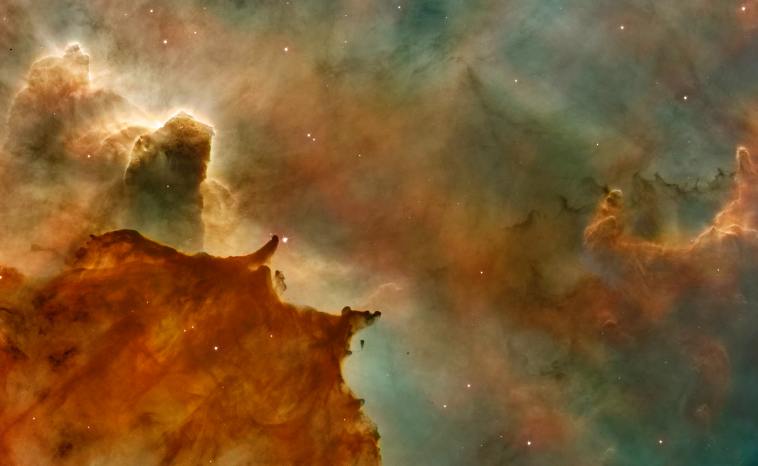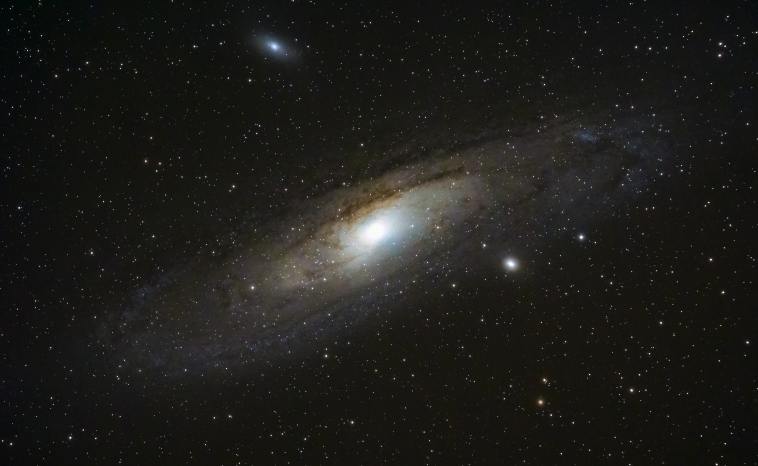How Do Galaxies Evolve?

In this article, we’ll embark on an astronomical journey to explore the birth and evolution of galaxies.
From humble beginnings to grandeur that spans almost unimaginable scales, galaxies have a fascinating story to tell. Join us as we delve into the depths of the cosmos and explore how these cosmic masterpieces unfold, unveiling the secrets of their growth and development over time.
A Stellar Genesis – How Are Galaxies Born?

Imagine a time, billions of years ago, when the universe was a hot and dense soup of particles, swirling and interacting in a cosmic dance. As the universe expanded and cooled, tiny fluctuations in density emerged, like ripples on the surface of a tranquil pond. In time, these fluctuations gave rise to regions of higher mass, where, over the course of millions of years, matter began to clump together, laying the foundation for the majestic structures we now call galaxies.
Then, as gravity continues its relentless pull, gas within these protogalactic clouds starts to swirl and condense into a swirling disk or sphere, setting the stage for the next act in this cosmic performance – star creation. As the densest regions of these clouds succumb to gravity, they collapse, heat up and ignite nuclear fusion, giving birth to the first stars. These stellar infants cluster together in their billions and form the beating heart of a newborn galaxy.
So, as you can see, the birth of a galaxy is not a single event but a series of star-studded performances. It is a symphony of cosmic proportions, orchestrated by gravity and played over millions of years. And just like that, a galaxy is born, ready to voyage through cosmic time, evolving, interacting, and leaving us stargazers in awe of their celestial beauty.
What Are the Different Types of Galaxies?

Galaxies exist in an astonishing variety of shapes and sizes. Among the most prevalent types are spiral galaxies, such as our very own Milky Way. These galaxies feature majestic arms elegantly spiralling outward from a central core. In contrast, the enigmatic elliptical galaxies, with their more rounded and symmetrical shape, are devoid of the distinctive spiral structure that defines their spiral counterparts.
Furthermore, there are the mysterious irregular galaxies, defying any attempts at categorisation, with chaotic and asymmetrical appearances that often leave us in awe. Each type of galaxy possesses its own unique allure, offering profound insights into the evolutionary journeys they have embarked upon throughout the vastness of the universe.
How Do Galaxies Merge?
In the vastness of the cosmos, galaxies often engage in an intriguing celestial dance, gracefully merging to form larger and more intricately structured cosmic entities. These galactic mergers occur due to intricate gravitational interactions, as if choreographed by the forces of nature. As they intertwine, tidal forces and gravitational disruptions elegantly reshape the galaxies, unveiling stunning displays of stellar birth and redefining their very essence.
Within this cosmic ballet, stars and gas clouds from different galaxies collide, triggering intense bursts of star formation. The immense gravitational forces at play cause spiral arms to stretch and intertwine, giving birth to new stars and sculpting breathtaking structures that defy imagination. Then, as these galaxies merge, their cores become a cauldron of activity, with supermassive black holes feasting on surrounding matter and releasing powerful jets of energy into the cosmos.
Not only do these fascinating cosmic collisions captivate our senses, but they also play a crucial role in shaping the intricate tapestry of galactic evolution. They serve as catalysts, igniting a chain reaction of star formation and driving the evolution of galaxies. Each merger forever alters the galactic landscape, leaving behind a legacy of cosmic beauty and scientific wonder.
Supermassive Black Holes: The Cosmic Architects
At the heart of countless galaxies, including our own Milky Way, lie monstrous entities known as supermassive black holes. These cosmic behemoths, with masses millions or even billions of times that of our sun, possess an unimaginable gravitational pull that defies comprehension. Their insatiable appetite knows no bounds as they indiscriminately devour surrounding matter, creating a swirling vortex of destruction. As a result of this chaotic process, they unleash powerful jets of energy that can span vast distances, leaving a trail of fireworks in their wake.
While it may seem counterintuitive, these enigmatic beasts play a crucial role in advancing galactic life. They act as cosmic regulators, influencing the growth and evolution of their host galaxies. Their gravitational influence can ignite bursts of star formation or quench the birth of new stars, sculpting the galactic structure in ways that defy our imagination.
Galactic Clusters: Cosmic Communities
Beyond individual galaxies lies another level of complexity – galaxy clusters. These vast congregations consist of hundreds, or even thousands, of galaxies held together by the relentless force of gravity. Just imagine the sheer magnitude of these cosmic gatherings, where galaxies of all shapes and sizes intertwine and interact, shaping the very fabric of the universe!
Galaxy clusters, with their immense size and mind-boggling mass, serve as celestial laboratories, offering a profound glimpse into the intricate relationship between dark matter, galaxy evolution, and the formation of large-scale cosmic structures.
Indeed, by studying the properties and dynamics of galaxy clusters, scientists gain invaluable insights into the growth, assembly, and development of galaxies on a cosmic scale. They unlock the secrets of how galaxies come into existence, how they evolve, and how they weave together the tapestry of our universe. Accordingly, it’s through unravelling the mysteries of galaxy clusters that we begin to understand the grand narrative of the universe’s evolution, painting a picture of its past, present, and future.
OSR Star Finder App

The story of galactic evolution continues to unfold, captivating astronomers and space enthusiasts alike. By studying the growth and development of galaxies over time, we inch closer to understanding the awe-inspiring mechanisms that have shaped our surroundings. So, let us continue to gaze up at the night sky, ponder the wonders of the universe, and embrace the ongoing journey of discovery.
As we continue to explore the unfathomable depths and mysteries of the universe, why not take your curiosity to astronomical heights using the OSR’s Star Finder App? It serves as your personal portal to the cosmos, allowing you to stargaze from the comfort of your home. Moreover, with the app, you can learn more about the galaxies that fascinate us and identify stars, constellations, and other celestial bodies. Don’t miss out on this stellar opportunity to bring the cosmos to your fingertips. Download the OSR’s Star Finder App today and let the celestial exploration begin!

